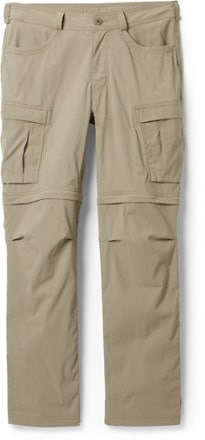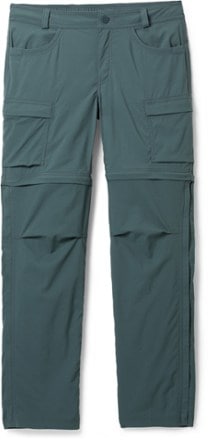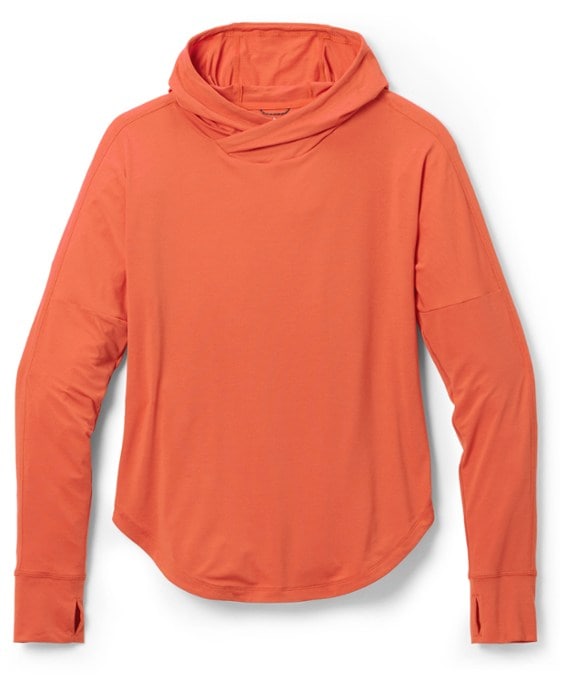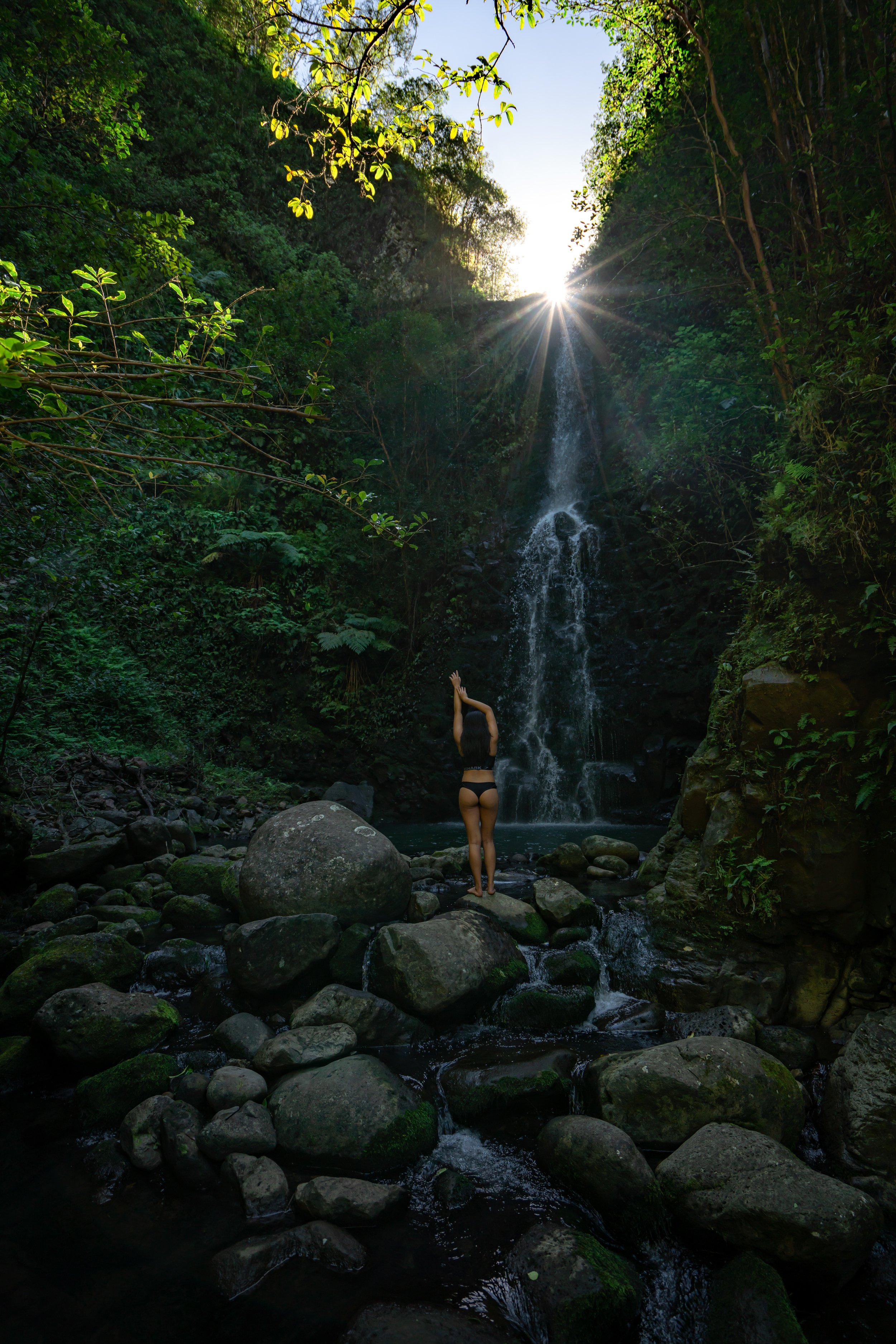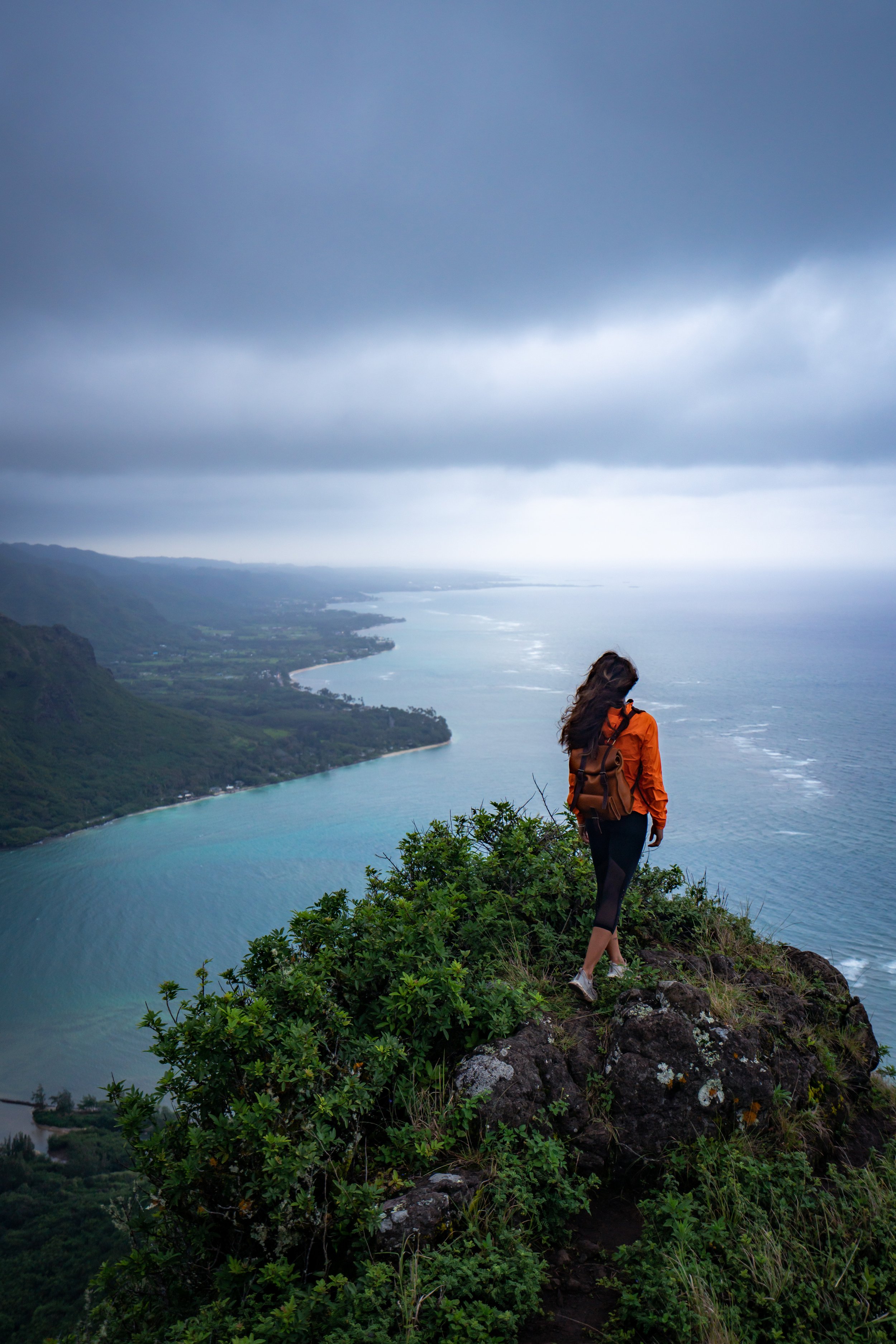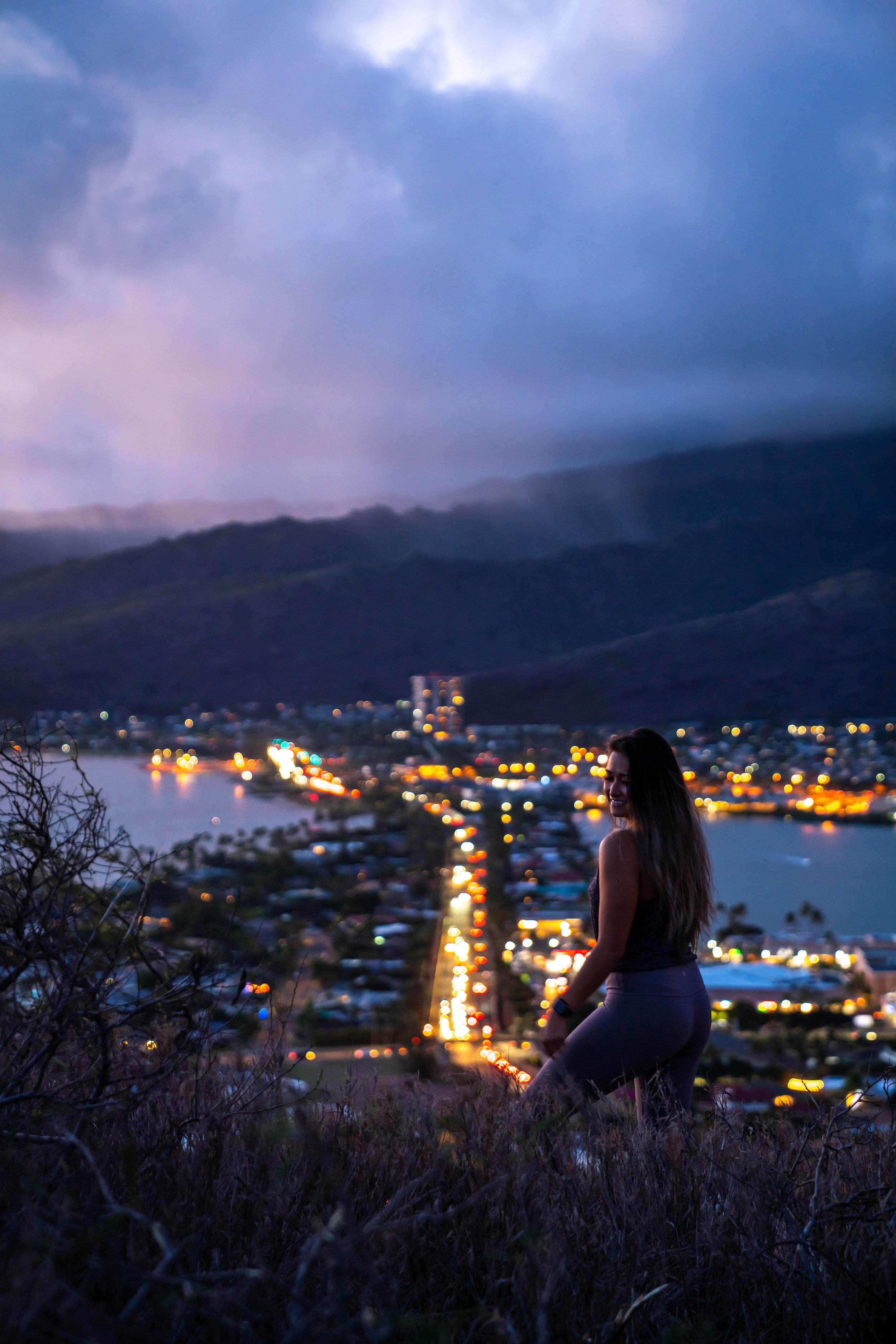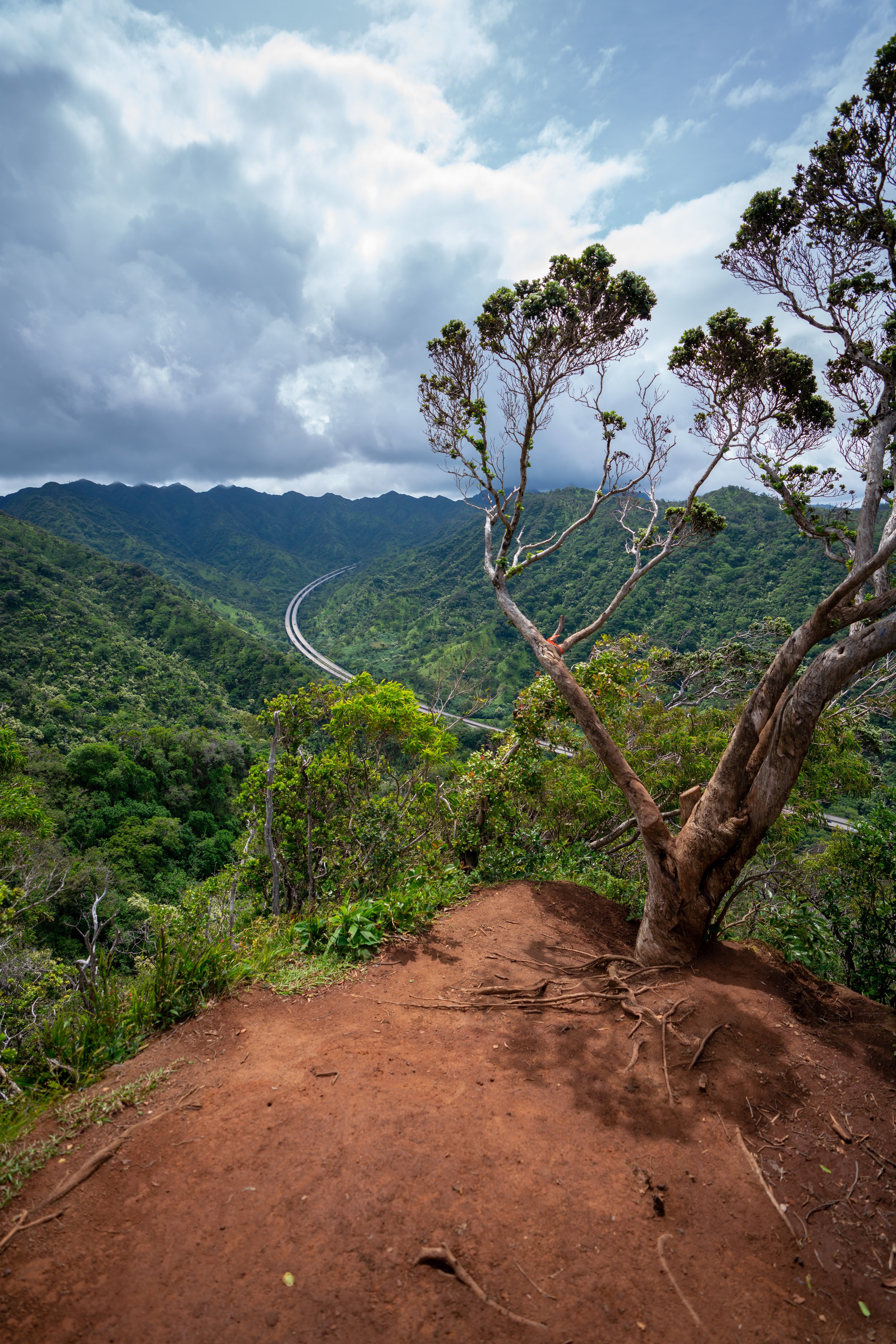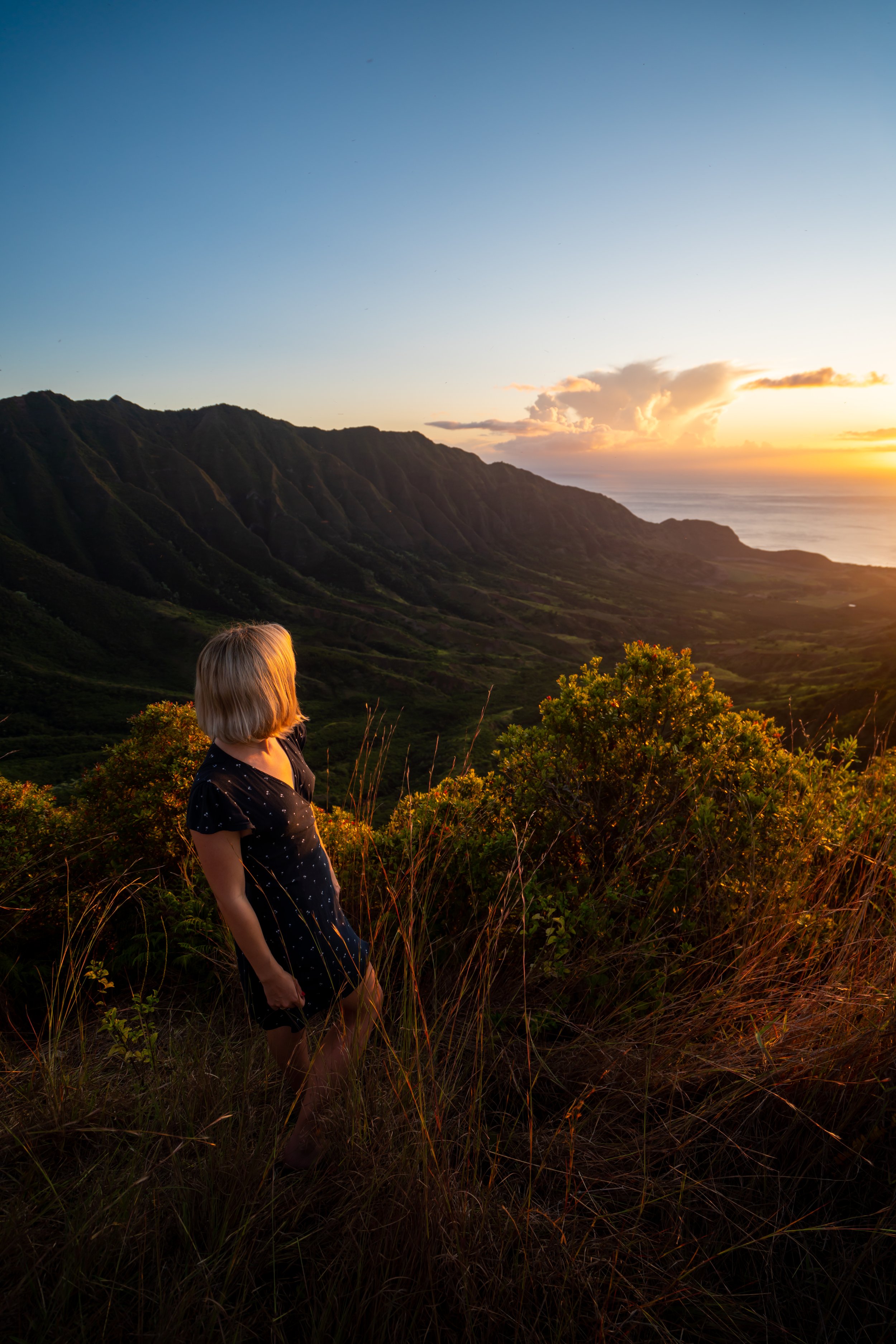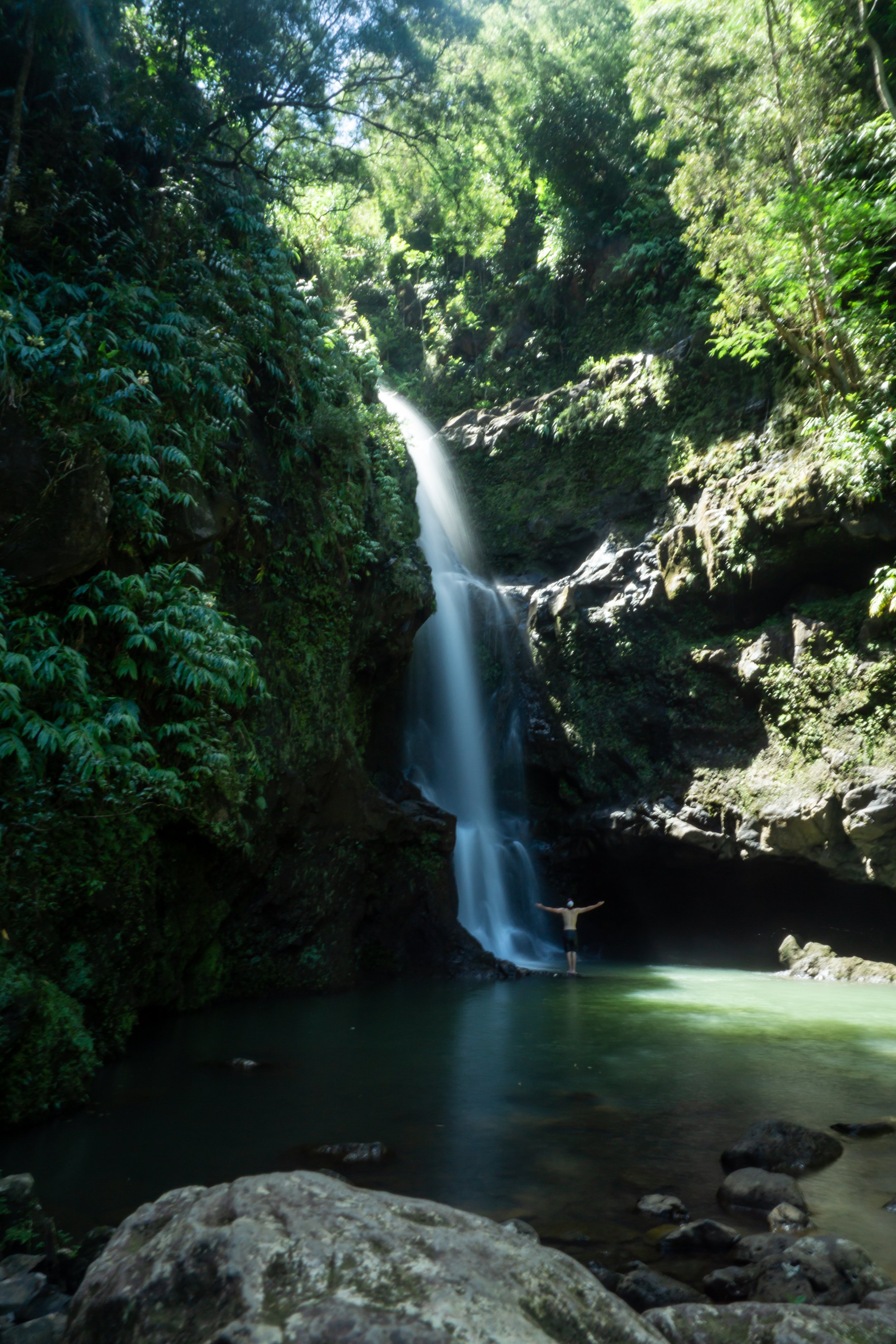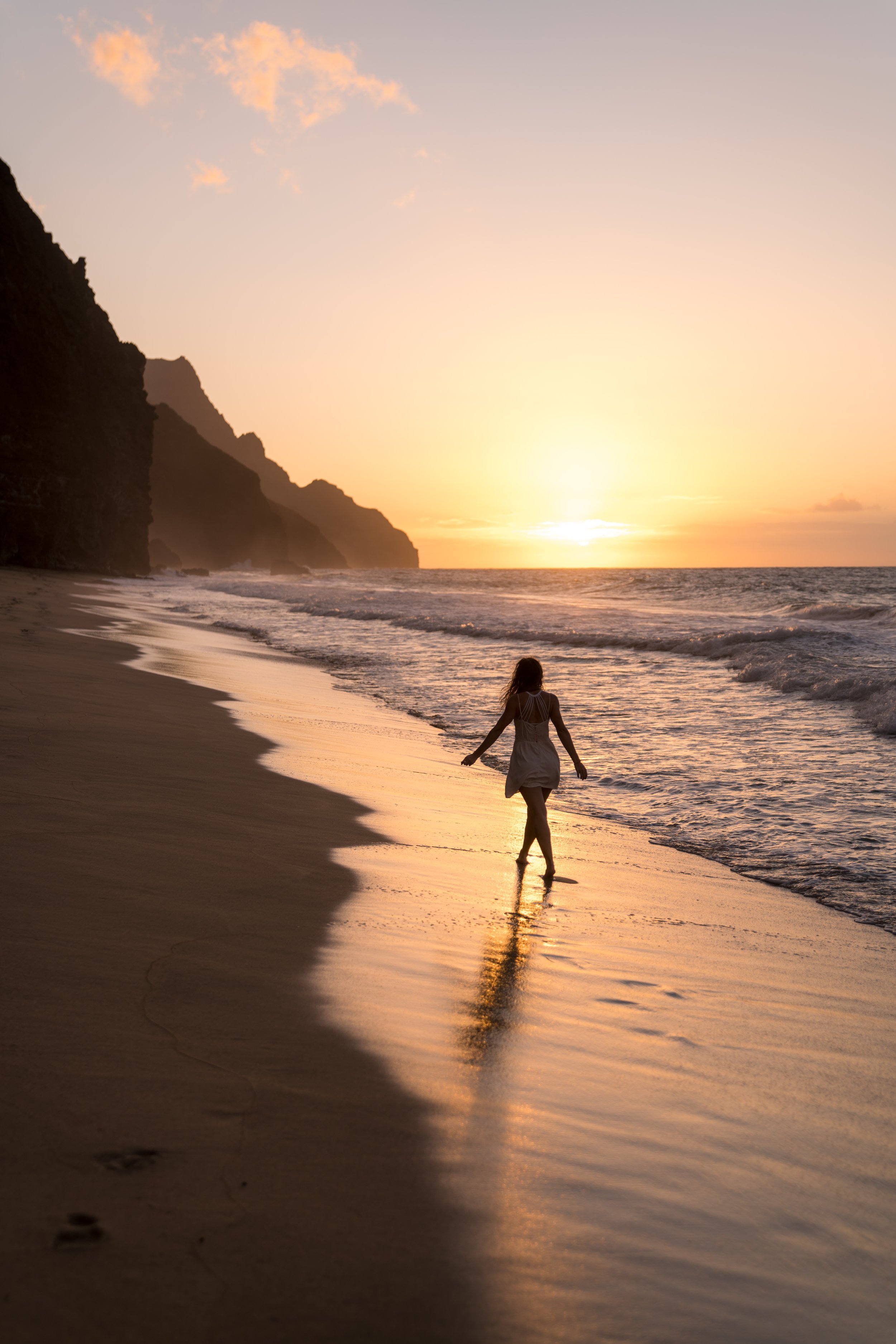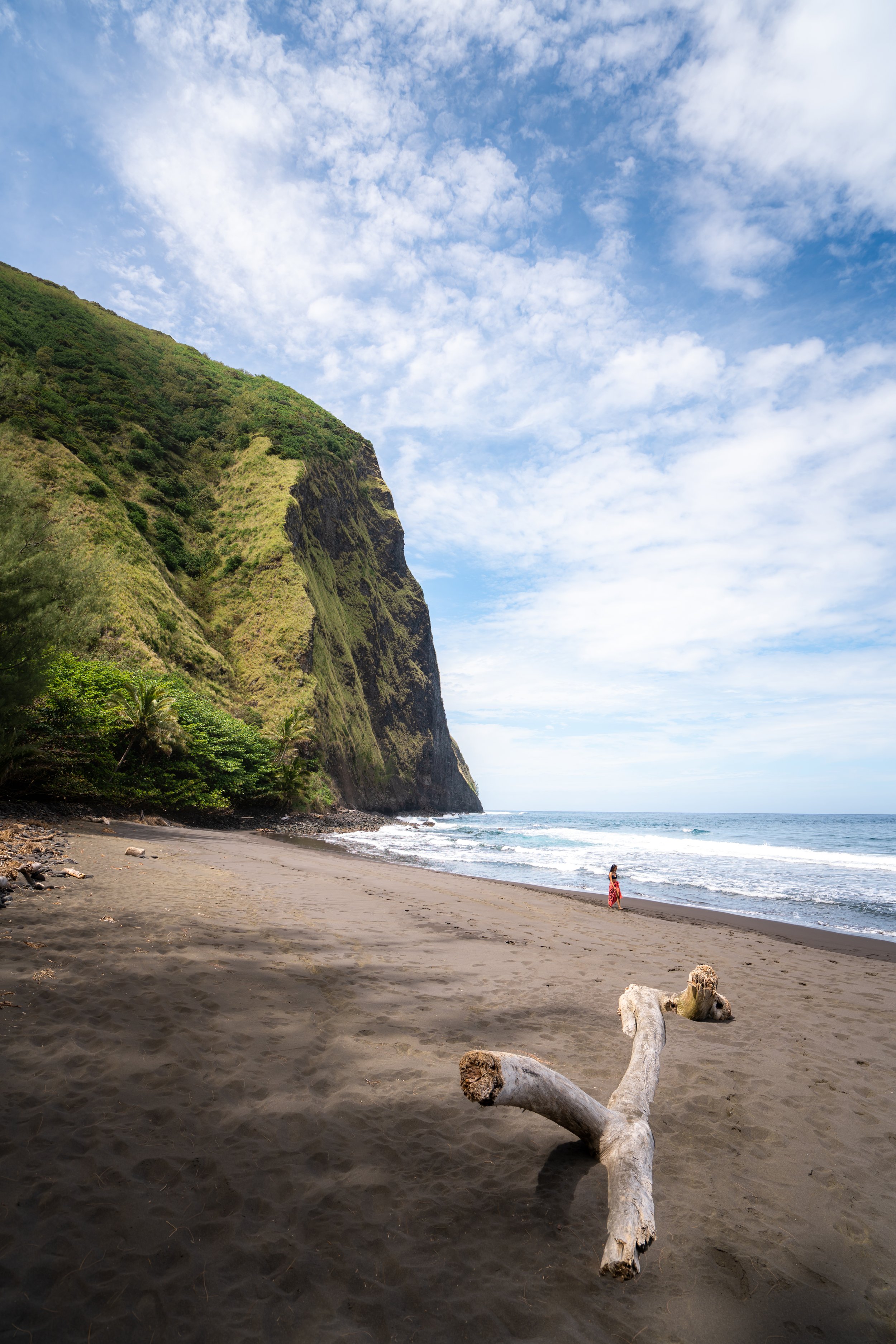Hiking the ʻIliahi Ridge Trail on Oʻahu, Hawaiʻi
Distance: 6.2 miles / 10.0 km
The ʻIliahi Ridge Trail in central Oʻahu is a great trail when you want a moderate challenge without the difficulty of climbing all the way to the Koʻolau Summit.
By this, I mean that the full loop, beginning on Mānana Ridge, is more of a workout than it may seem, as the trail descends steeply not once, but twice, down to the Mānana Stream in order to connect the two ridge trails into this longer loop.
That being said, a common sentiment along hikers is that trail is too overgrown, and while it entirely depends on how much traffic and maintenance ʻIliahi Ridge has received, I can confidently say that the trail is not the nearly the most difficult trail on the island in terms of overgrowth.
In fact, the overgrowth is quite negligible, so long as you wear good hiking pants to help with the Uluhe ferns.
The pants below are my recommendations that hold up the best with the overgrowth here in Hawaiʻi, but with any hiking pants that need to be durable, make sure that they are at or near 100% nylon. This is really the most important factor!
ʻIliahi Ridge Trailhead Parking
Parking for the ʻIliahi Ridge Trail is located at the very top of Komo Mai Drive in Pearl City.
This is the same trailhead for both Mānana and Waimano Falls, meaning that it may be difficult to find parking on a weekend because Waimano Falls is such a popular trail.
Google Maps Directions: ʻIliahi Ridge Trailhead
My Hawaiʻi Hiking Checklist
Osprey 3L Water Bladder - The Osprey 3L water bladder is the most universal hiking and backpacking water bladder on the market, and it’s my go-to because of the slide-off seal that allows it to be quickly filled from the top. Additionally, individual parts are easily replaceable, such as the bite valve.
Blister / Heel Protectors - I swear by these cheap, amazing heel protectors to prevent blisters for nearly every kind of hiking and backpacking that I do!
Black Diamond Headlamp - Personally, I recommend the Black Diamond Storm because it is one of the brightest, lightest, and longest-lasting headlamps on the market—and trust me, the weight-to-battery-life ratio really does matter!
Hiking / Trail Running Shoes - Depending on the type of trail, I prefer to use either the Keen Targhee for longer, more rugged hiking or the HOKA Zinal Trail-Running Shoe for lighter, less intense trails. In either case, both have been amazing to me for many years across countless environments, and both can be found in men’s and women’s sizes. - (Men’s Keen / Women’s Keen) (Men’s HOKA / Women’s HOKA)
Waterproof Rain Shell - You never know when it may rain, and I’ve learned over the years that a rain shell is far better than a rain jacket. By this, I mean that it’s best to have something that the water will roll right off of, which is why I recommend the Patagonia Torrentshell 3L available in both men’s and women’s sizes.
High SPF Sunscreen - Packing high-SPF sunscreen is a must for long days outside!
Hiking the ʻIliahi Ridge Trail
From the parking area, the ʻIliahi Ridge Trail begins at the top of the Komo Mai Dr. at the Mānana Ridge Trailhead.
ʻIliahi-Mānana Ridge Junction
At about 0.3 miles (0.5 km), the Mānana Ridge Trail comes to the first of two connections with the ʻIliahi Ridge Trail to the north.
While it entirely depends on whether you want to go up or down ʻIliahi Ridge, I personally recommend taking the first junction because I think ʻIliahi makes for a more beautiful clockwise hike than in reverse.
That being said, the lower ʻIliahi Ridge junction is located on the left-hand side of the trail beneath the second set of power lines.
If you reach the water tank, you’ve gone too far up Mānana Ridge.
Read My Separate Post: Mānana Ridge Trail
Following the power lines, the ʻIliahi Ridge Trail will begin the steep descent down to Mānana Stream.
Eventually, the trail down into the gulch will make this hard left turn to continue down a set of switchbacks immediately following.
Mānana Stream
Once at the Mānana Stream, go left to follow the trail downstream for a short distance to find the trail that climbs back up on the other side.
This is the first of two stream crossings on the ʻIliahi Ridge Trail.
Almost immediately after the stream crossing, the ʻIliahi Ridge Trail will come to this split.
Go right to stay on the most straightforward path. The trail to left can also be taken, but it is not as straightforward as the trail to the right.
You will know you’re on the correct trail because it should start climbing out of the gulch almost immediately after the previous split.
When the trail reaches the ridge on the far side of the stream, go right to continue up to ʻIliahi Ridge.
This section will remain fairly steep, as the trail out of the gulch climbs nearly 460 ft. (140 m) in just 0.4 miles (0.6 km), from the stream to the crest of the ridge.
At this next split, go right to continue up the shortest path to ʻIliahi Ridge.
ʻIliahi Ridge
Once on ʻIliahi Ridge, you may notice a number of trails leading in a number of different directions, but the correct trail is the one that hugs the right side of the ridge closest to the Mānana Stream.
At this next split, go right once again.
This is the point when ʻIliahi Ridge narrows down to just one trail that continues further up the Koʻolau Mountains.
I think it’s worth noting that I’ve seen the best of ʻIliahi Ridge and the worst of ʻIliahi Ridge in terms of overgrowth.
That being said, these photos were taken after a group of volunteers recently put a lot of work into the trail to cut back the Uluhe. A trail this clear will not always be the case.
For this reason, I recommend planning for the worst and hoping for the best by wearing good hiking pants, as the ʻIliahi Ridge Trail can be a much less enjoyable hike, as previously mentioned, should you choose to wear shorts.
For obvious reasons, the ʻIliahi Ridge Trail gets its name from the many ʻIliahi trees that can be found along the hike.
To this point, the ʻIliahi Ridge Trail is one of the most pristine mixed Koa-ʻIliahi forests on the island. Therefore, I ask that you please do everything you can minimize your impact, as this species can only be found on the island of Oʻahu.
This view is one of my favorite sections on the ʻIliahi Ridge Trail.
ʻIliahi Ridge Summit
The photo below is the summit of the ʻIliahi Ridge Trail, and it’s where the loop turns back to begin the descent down to the Mānana Stream.
Initially, the hike back down to the Mānana Stream starts off gradually, but it gets a bit steeper toward the bottom of the gulch.
Toward the bottom of the descent, the ʻIliahi Ridge Trail drops down this steep section, which can be quite slippery.
For this section specifically, you may want to consider packing a rope, especially if Oʻahu has been experiencing a lot of wet weather.
Once at the bottom of the gulch, it may seem like the trail should turn to the right to go 'downstream', but in reality, you want to go left to continue toward the Mānana Stream.
That being said, this upper section in the gulch is a bit longer, at roughly 0.3 miles (0.5 km), than the lower stream crossing described previously.
This is all without mentioning that the mosquitoes alone in these lower sections should encourage you to wear pants and a long-sleeve sun shirt if the overgrowth did not!
Mānana Stream
After about 0.3 miles (0.5 km) in the gulch, the ʻIliahi Ridge Trail finally reaches the Mānana Stream, where the trail back up to Mānana Ridge is located on the far side.
Upper ʻIliahi-Mānana Ridge Junction
The open, grassy area in the photo below is at the top of the ridge, overlooking the Mānana Stream adjacent to the Mānana Ridge Trail.
Here, go right to continue back down the well-trafficked Mānana Ridge Trail in order to complete the entire 6.2-mile (10.0 km) ʻIliahi-Mānana Ridge Loop.
Read My Separate Post: Mānana Ridge Trail
Mānana-Waimano Falls Junction
At about half way down Mānana Ridge, the ʻIliahi Loop passes by the junction for Waimano Falls on the left.
Go straight to continue back to the Mānana Ridge Trailhead.
Read My Separate Post: Waimano Falls Trail
This first set of power lines on the hike back is not the original ʻIliahi Ridge junction.
ʻIliahi-Mānana Ridge Junction
This is second set of power lines on the hike back is the same ʻIliahi Ridge Trail split from earlier that began the descent down into the gulch.
Native Plants on the ʻIliahi Ridge Trail
The ʻIliahi Ridge Trail is obviously called ʻIliahi Ridge for a good reason, as the trail has one of the highest-density ʻIliahi forests that I’ve come across on Oʻahu.
That being said, I noticed the first ʻIliahi tree at about 1.75 miles (2.8 km) into the trail, and I didn’t stop seeing them until a short distance down Mānana Ridge on the return loop.
Furthermore, other native plants that can be found include Koa, ʻŌhiʻa lehua, Uluhe, and Kōpiko, to truly only name a few.
If you’re interested in learning more about these and tons of other native Hawaiian plants from across the islands, I encourage you to read more in my separate post linked below.
Read My Separate Post: Native Hawaiian Plant Guide
More Oʻahu Adventures
If you’re interested in reading about some more amazing Oʻahu adventures, check out my separate posts below!
Best Hotels & Restaurants in Waikīkī
If you’re trying to decided where to stay on Oʻahu, check out my top 10 list for the best resorts and restaurants in Waikīkī.
I break down what makes one hotel a better choice over another, so that you can find the best fit for your stay on the island.
Read My Separate Post: Best Waikīkī Hotels & Restaurants
HNL Airport-Hotel Shuttle
Prices on ride-share apps like Uber/ Lyft cannot beat the price of booking your hotel shuttle prior to arrival. I say this because there are additional fees for ride-share airport pick-ups at Honolulu Airport (HNL), which is why I recommend booking your transportation in advance using the options below.
Additionally, the last option below will go as far as the Ko ʻOlina Resorts on the West Side and Turtle Bay on Oʻahu’s North Shore!
Best Way to Book Rental Cars!
I travel quite a bit, and I know firsthand that finding a good rental car deal can be a challenge, but that’s why I recommend comparing all of your options with Discover Cars.
In short, Discover Cars is a well-known, reputable business that allows you to search for the best deal across companies, and they have the best full-refund cancellation policy I’ve ever seen, valid up to 72, or sometimes even 48, hours prior to your reservation!
Book Here: Discover Cars
Visiting Other Islands
If you are visiting Oʻahu or heading to another island, check out some of my personal recommendations for Oʻahu, Maui, Kauaʻi, Molokai, Lānaʻi, and Hawaiʻi Island (Big Island) in these separate posts.
If you’re trying to decide which island is right for your visit, check out my overview about each island in the post below.
Read My Separate Post: What is the Best Hawaiian Island to Visit?
What is the Best Time of Year to Visit Hawaiʻi?
The weather in Hawaiʻi can often appear to be warm and beautiful throughout the year, but in my experience, there is a lot more to consider when planning what time of year to visit the islands, such as what island you are considering, what sides of each island do you plan to stay, what activities are you most interested in, the wildlife, and countless other nuanced variables that can all impact the type of trip you can expect to have.
For these reasons, I highly recommend reading through my separate article to not only understand my thoughts regarding the best time of year to come to Hawaiʻi but also what you need to consider based on the time of year that you plan to visit.
Read My Separate Post: What is the Best Time of Year to Visit Hawaiʻi?
10 Best Tours & Excursions on Oʻahu
There are a lot of different tour options to choose from on Oʻahu, but to make it easier to decide, I made a list of my favorite tours because some things simply are better with a local guide!
Read My Separate Post: Best Tours on Oʻahu
Safety
All hikes in Hawaiʻi should not be compared to trails outside of the islands, and hikers should exercise due caution on every adventure, given that many are extremely dangerous.
By this, I mean that Hawaiʻi is known for hot, humid weather, steep, dramatic, and unstable cliffs, and flash floods, which can occur without warning. Therefore, it is important that you check the local forecast, understand the physical condition of your entire group, and pack sufficient food and water before attempting any adventure.
Disclaimer
All information provided on this blog is for informational purposes only and is not intended to be a substitute for information or advice from qualified professionals or managing agencies.
Noah Lang Photography LLC makes no representations or warranties regarding the accuracy or completeness of the information provided here, and readers should use their own discretion, judgement, and seek professional advice where it is appropriate.
Furthermore, Noah Lang Photography LLC shall not be held responsible for any injuries, lost individuals, or legal issues arising from the use of information provided on this website, and if applicable, the above safety disclaimer should be referenced to provide a generic overview of the risks involved.
All said, the content on this blog is for the sole use of Noah Lang Photography LLC, and unauthorized use or reproduction of this content is strictly prohibited.
Disclosure
This post is not sponsored.
However, some of the links in this post are affiliate links, which means that I may earn a small commission if a purchase is made through one of those links. This commission comes at no additional cost to you, and I only recommend products that I personally use and believe will add value to my readers. Thank you for your support, which enables me to continue creating more!
To read the full privacy policy, click here.

About This Blog
Noah Lang Photography, also known as @noahawaii, is 100% reader-supported!
I do not accept guest articles or sponsored content of any kind on my blog, which is why, if you enjoy the outdoor and travel content I create, please consider buying me a coffee!
I appreciate your support, which helps me continue to keep this blog alive!



